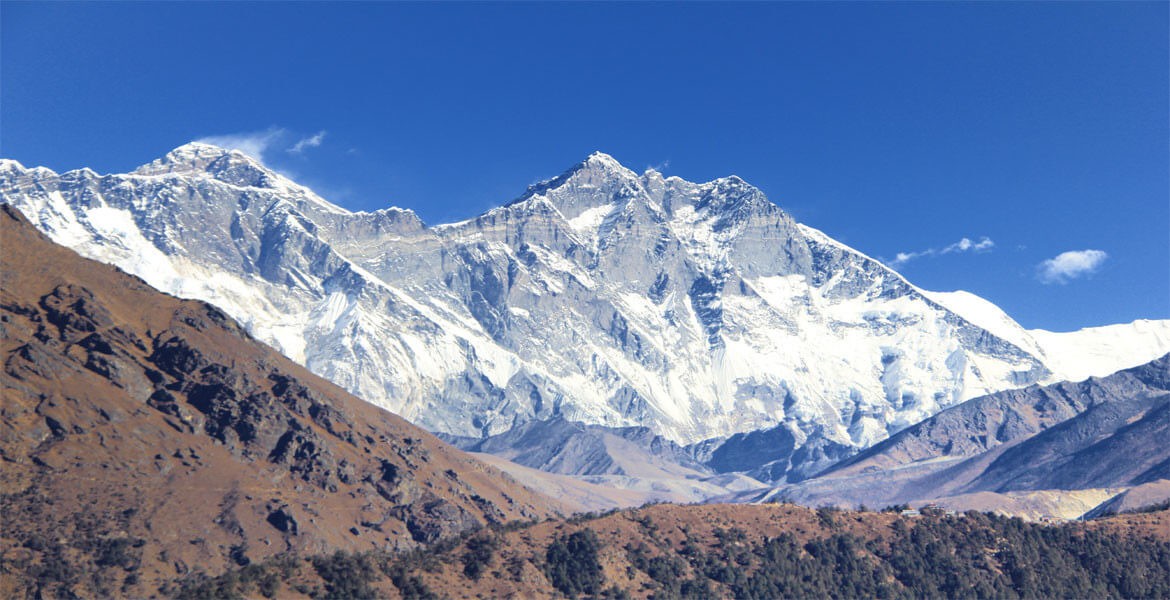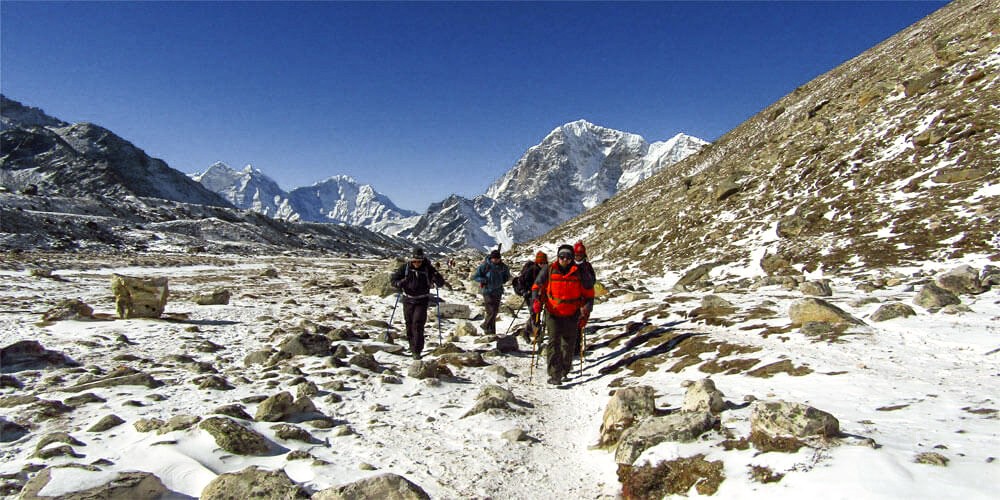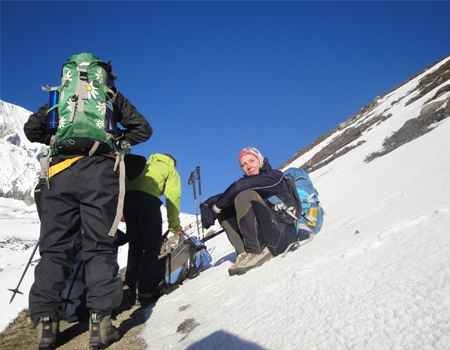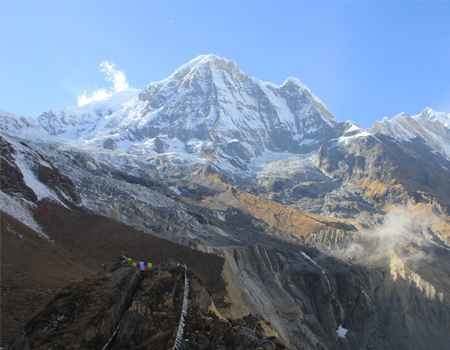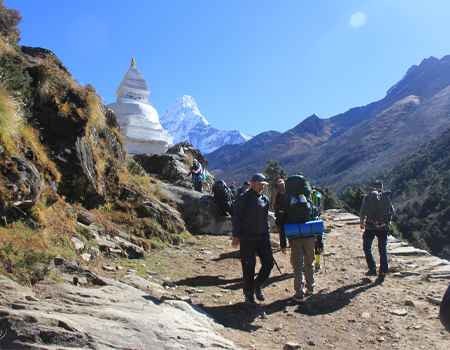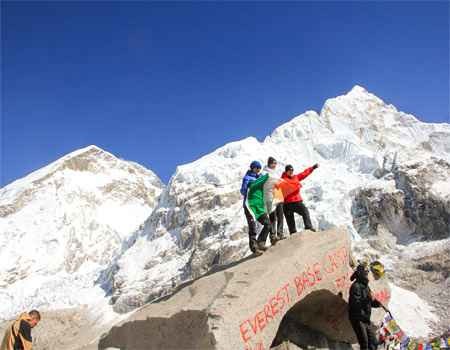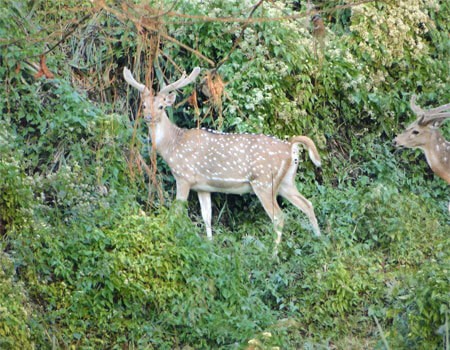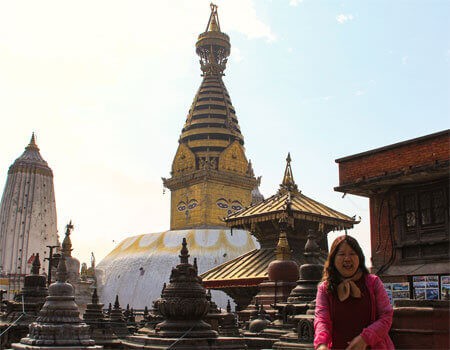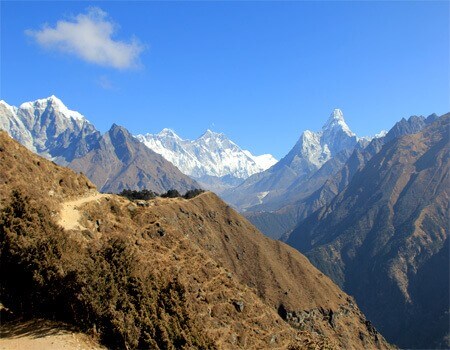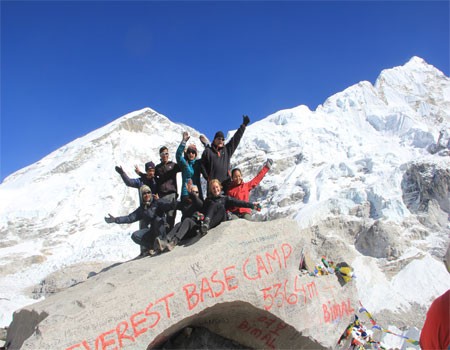Winter in Nepal, spanning from December to February, transforms the Himalayas into a pristine, silent domain. For some, the coldest stretch of the year is reason enough to stay away from the mountainous trails. But for seasoned adventurers and high-mountain enthusiasts, this season promises solitude, clarity, and a side of Everest few ever witness. Read on to discover why winter could be the best-kept secret for trekking to Everest Base Camp (EBC).
The Allure of Winter at Everest Base Camp
A Season of Solitude
The months of December, January, and February see the fewest trekkers on the Everest Base Camp trail. Gone are the bustling crowds of spring and autumn. Instead, the trail becomes a quiet path, winding through snow-laden forests, tranquil villages, and astonishingly crisp mountain vistas.
Pristine Views and Crystal-Clear Skies
If you cherish unobstructed views, winter may offer the most reliable window of the year. With moisture minimal and the monsoon haze long gone, the world's most famous peaks—Everest, Lhotse, Nuptse, Ama Dablam—appear in all their glory, often beneath unwavering blue skies.
Weather and Temperature: What To Expect
How Cold Is It?
Everest Base Camp: Daytime temperatures typically range from -5°C to 5°C. Nighttime can bring deep chills, plunging to -15°C, and at higher camps, such as Gorakshep, temperatures may drop as low as -20°C, especially in December and January.
Lower elevations, such as Lukla, are milder but still experience temperatures that dip below zero at night.
Snowfall is relatively frequent, especially at higher elevations, leading to icy sections on the path and a landscape transformed by white.
December, January & February: Month-by-Month
December: Marked by the first significant snowfalls and drying winds, December is colder than autumn but is often favored for its sunlit days and clear skies. The first few weeks, in particular, can see near-perfect weather, albeit freezing.
January: The coldest month, with the least daylight. Expect snow-covered paths, biting winds, and the lowest visitor numbers.
February: Still deep in winter, but with hints of the coming spring and marginally warmer days by late February.
We have a detailed blog post about the weather and temperatures of the Everest Base Camp Trek, which you can read to learn more about the temperatures at individual locations in different months and seasons.
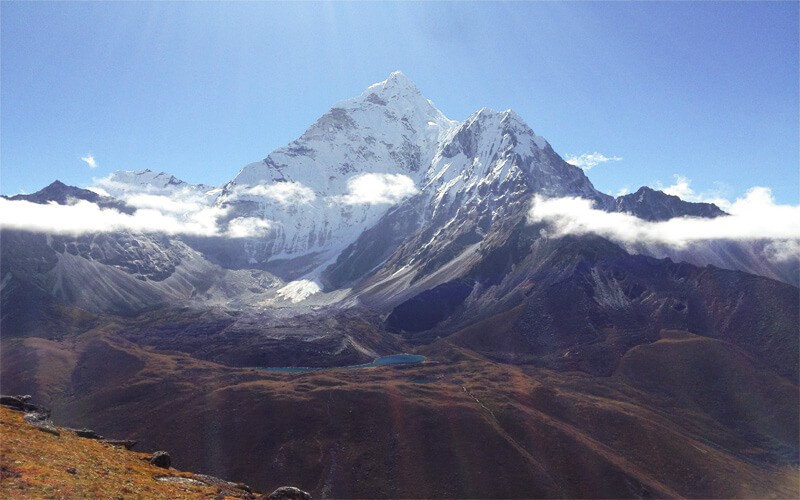
Mt. Amadablam Dingboche on Winter EBC Trek
Benefits of Trekking to Everest Base Camp in Winter
Tranquility and Fewer Crowds
In winter, the EBC trail is almost deserted. You may find yourself walking for hours without encountering another group. Accommodation is readily available, often without prior booking, and the common areas in lodges are peaceful, making them perfect for reflection or conversation with locals.
Unmatched Mountain Landscapes
Winter's snow transforms the Khumbu region into a magical world. The clarity of light, absence of haze, and beautifully dusted forests create outstanding opportunities for photography and appreciation of the landscape's rawness.
Easy Accommodation and Better Service
With so few trekkers, securing a bed at any teahouse is relatively easy. Lodge owners, less rushed, may offer extra blankets and more attentive service. Some luxury lodges even offer off-season discounts.
Unique Wildlife Encounters
With the quiet, wild animals such as the Himalayan Thar, Musk Deer, and the resplendent Himalayan Monal are more likely to be spotted close to the trail, seeking shelter in the forest while there's less human disturbance.
Lower Prices
Reduced demand results in competitive pricing on food, accommodation, and possibly guiding services. Winter can be the most budget-friendly time to see Everest.
Reliable Lukla Flights
While weather can always disrupt flights in the Himalayas, winter visibility (especially in the mornings) can be better than during the summer monsoon or spring's afternoon clouds, reducing—but not eliminating—flight cancellations.
The Challenges of Winter Trekking
Extreme Cold and Icy Trails
Prepare for bitter cold, especially at night and at higher camps. Icy trails can increase the risk of slips and falls, so it's essential to exercise vigilance and wear good gear.
Reduced Daylight
Shorter days mean less time for trekking, making early starts essential. Planning your daily itinerary with extra caution is crucial.
Altitude Sickness and Health Risks
Cold air is dry, which increases the risk of dehydration. The combination of extreme cold, high altitude, and increased exertion may heighten vulnerability to altitude sickness, frostbite, or hypothermia. Adequate acclimatization and hydration are non-negotiable.
Limited Services and Open Shops
Many bakeries, shops, and some lodges close for the season, especially above Namche Bazaar. Stock up on essentials, but don't expect an abundance of nightlife or amenities along the way.
Feelings of Isolation
For solo travelers, solitude can become loneliness. There are fewer trekkers to bond with, which may amplify feelings of isolation. Still, lodge staff and Sherpa hosts often provide much-needed warmth and company.
Essential Winter Packing List
Packing light yet warm is key. Here's what every winter EBC trekker needs:
- High-quality down jacket
- Waterproof shell jacket (Gore-Tex recommended)
- Insulated, windproof pants
- Multiple thermal layers (tops & bottoms)
- Warm gloves (both liner and insulated)
- Fleece/wool hats and a balaclava or neck gaiter
- Sunglasses and snow goggles for glare
- Properly insulated hiking boots and gaiters
- Extra sets of wool or synthetic socks (change often)
- -20°C sleeping bag (or colder)
- Daypack and rucksack or duffel
- Trekking poles (for uneven, icy terrain)
- Sunblock, lip balm, moisturizer
- Headlamp with extra batteries
- First aid kit (including altitude sickness medication)
- Water bottles and thermal flask
- Wet tissues or biodegradable wipes
- Power bank and spare camera batteries
- Books or journals for evenings
Carefully read our blog on the essential equipment list for the Everest Base Camp Trek for more information, which provides authentic details for both male and female trekkers.
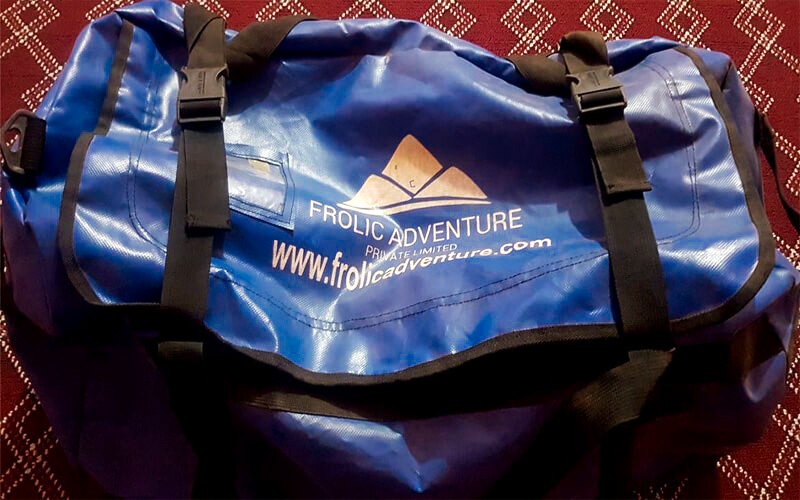
Main bag for trekking equipment
Trekking Tips for a Safe and Successful Winter Journey
- Start hikes early to maximize daylight.
- Change out of damp clothing immediately on arrival at teahouses.
- Constantly monitor signs of altitude sickness and communicate with guides.
- Avoid stopping near icy rivers, streams, and waterfalls.
- Stay hydrated by consuming regular warm fluids and eating a balanced diet with enough calories.
- Keep an emergency stash of snacks.
- Check for icy patches along the trail and walk mindfully.
- Bring entertainment—a book or journal—for quiet, longer evenings.
Festivals and Culture During Winter Treks
Winter in Nepal isn't just about snow. The season is dotted with lively festivals:
Lhosar (Losar): Celebrated by Tibetan Buddhist communities, including Sherpa, Tamang, and Gurung, falling variously in December, January, or February.
Maghe Sankranti: Occurs in January, marking the end of the solstice and the start of longer days. It's celebrated with ritual bathing, traditional foods, and family gatherings.
Sonam Losar, Gyalpo Losar, and Christmas add to the vibrant winter calendar. Shivaratri often falls in February and is celebrated nationwide with temple visits and festivities.
These festivals enhance the winter trekking experience, providing a glimpse into the region's rich spiritual and cultural heritage.
Alternatives to Classic Winter EBC Treks
Everest Panorama Trek
Suppose you prefer avoiding the deepest cold or want a gentler introduction to Everest. In that case, the Everest Panorama Trek is an excellent alternative for winter. Traversing as far as Tengboche, this shorter trek grants superb views of Everest and other giants, passing through Sherpa villages and rhododendron forests—ideal for families and those wary of extreme cold.
Helicopter Tours to EBC
If trekking in sub-zero temperatures is daunting, consider an Everest Base Camp Helicopter Tour. In just a few hours, you can fly from Kathmandu to Kalapatthar, enjoy jaw-dropping aerial views, touch down at scenic points, and return—witnessing Everest's grandeur without stepping into the cold for days on end.
Scenic Mountain Flights
A budget-friendly, fast alternative is a scenic mountain flight from Kathmandu. These flights follow a route along the Himalayan range, offering all passengers window seats. On a clear winter day, you'll see Everest, Makalu, Kanchenjunga, and more.
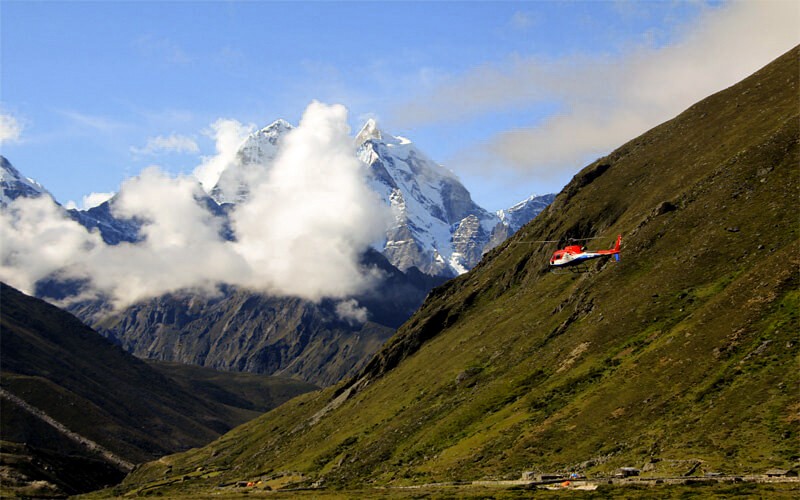
Helicopter flight to the Everest base camp
Additional Activities Pre- and Post-Trek
Kathmandu Valley Heritage Tours: Explore ancient Durbar Squares, sacred temples, and vibrant bazaars.
Day Hikes Around Kathmandu: Champadevi, Shivapuri, Jamacho, and Nagarkot trails offer excellent preparation for bigger treks.
Chitwan Jungle Safari: After your Himalayan adventure, unwind in the warm jungles of Chitwan, where you can spot rhinos, elephants, and a variety of exotic birds.
Conclusion
Winter at Everest Base Camp is both a challenge and a reward. The coldest months, from December through February, demand well-prepared trekkers but offer unmatched peace, natural beauty, and cultural depth. With the right gear, sensible planning, and an adventurous spirit, trekking to EBC during winter is a singular experience—one that reveals the true majesty of Nepal's Himalayas for those willing to embrace the cold.
If venturing to Base Camp itself feels too daunting, the Everest Panorama Trek or a helicopter tour makes sure you don't miss Everest's majestic allure. Whatever your choice, winter in the Khumbu comes alive in its own, unforgettable way.
